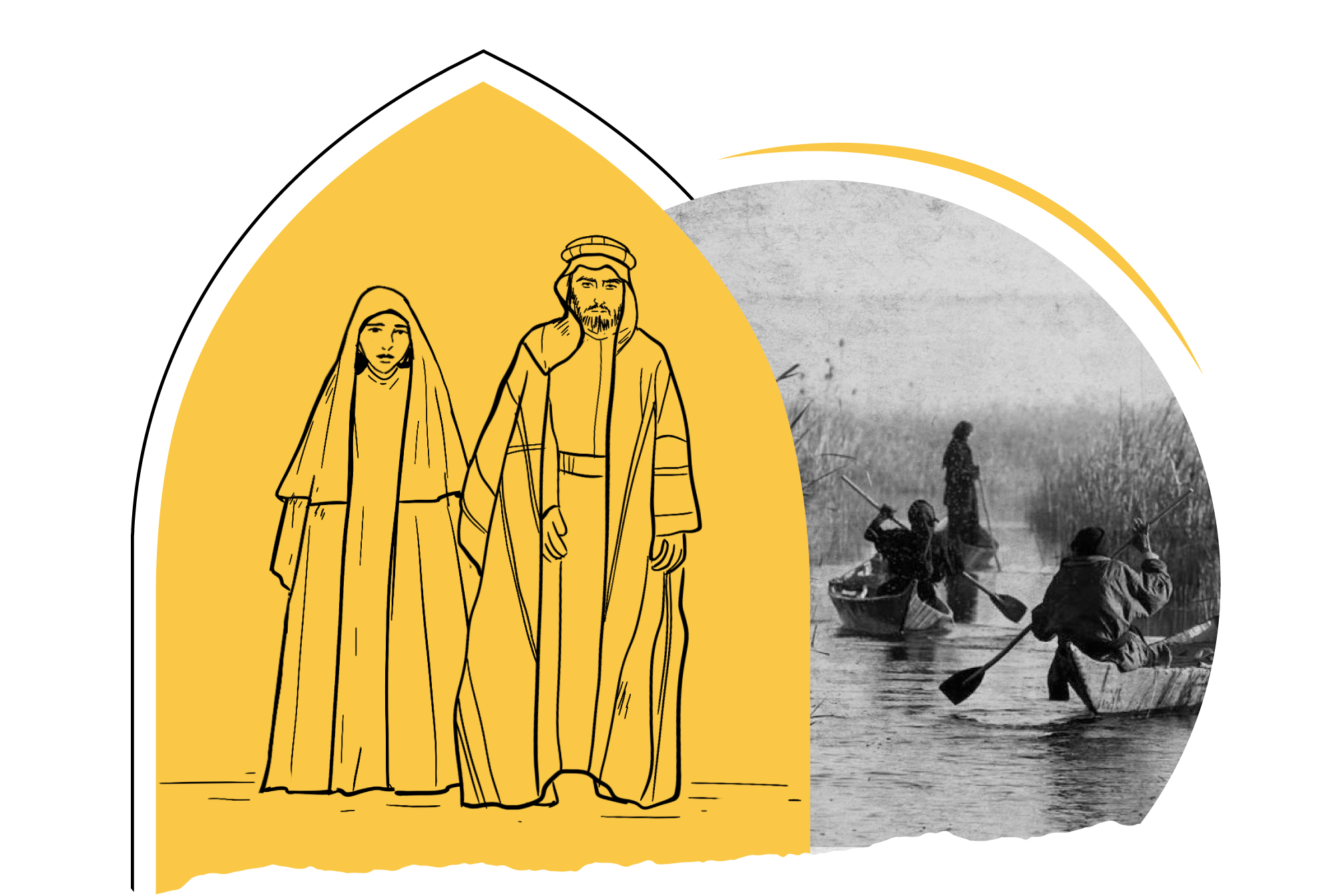
In Hawizeh Revolution (1928)
The Persians used the policy of dispersal and infiltration to thwart the rebels
Persian Pahlavi pages of treachery in Ahvaz are numerous and extended. Reza Shah Pahlavi sought to “dissolve the various nationalities in Iran within the Pahlavi state”, hence he stated that all peoples residing in Iran who belong to non-Persian origins – including the Ahvazi Arabs – are considered “within the Iranian nation”. In fact, that alleged nation did not exist in reality. Therefore, the Shah attacked the culture and traditions of the nationalities that were forcibly annexed to the Iranian Empire, including Ahvazi Arabs.
With regard to Ahvaz, Tehran imposed the Persian stamp thereon by force, resorting to changing the Arabic name “Ahvaz” to an alternative Persian name, “Khuzestan”, followed that by imposing a Persian tint on many Arab aspects of Ahvaz, until some described this racist policy by saying that, during the reign of Shah Reza, Iran had become a “dismal prison for peoples, where minorities’ national rights were crushed”.
The British recognized Ahvazi Arabs hatred for the Persians and their resentment for being occupied thereby

This increased Ahvazi Arabs’ discontent, who expressed this in several uprisings against Iranian domination, especially after the fall of Ahvaz in 1925. Perhaps the most important of these Arab revolutions was what was known as Hawizeh Revolution, which broke out against Iran in 1928. Reasons for this revolution are due to arbitrary decisions taken by the Iranian authorities against Ahvazi Arabs. The most dangerous of those decisions was to disarm them because Iran realized that Arab resistance to the Iranian occupation never relaxed. Tehran authorities also sought to obliterate the Arab character of Ahvaz people by issuing arbitrary decisions requiring them to replace their authentic Arab dress with Pahlavi clothes. Iranian authorities also stripped most of the Arab clan heads from most of their properties and lands, in an attempt to weaken the role of popular leadership.
Iranian military governor of Ahvaz himself supervised the implementation of these unjust decisions. He gathered most of Arab clans’ heads and ordered them to implement these orders. The military ruler insisted that the Arab leaders quickly change their Arab dress and wear Pahlavi clothes before him, and most of them complied with these orders.
As a matter of fact, most of the people objected those ordered and refuses to give up their weapons or national dress; they even rejected the heads of the Arab clans who complied with those unjust decisions. The revolutionary forces rallied behind Sayyid Muhyiddin al-Zaibaq, who was known for his Arab firmness and his rejection of Persian domination over Ahvaz. Thus, the revolution began under the leadership of Al-Zaibaq, where Arab clansmen attacked the Iranian centers in Hawizeh and the traitors among some of the Arabs, agents of Tehran, were eliminated.
The culmination of this revolution was when Hawizeh declared its separation from Iran, its independence and return to Arab rule. Independence of Hawizeh lasted for nearly six months and the success of that revolution led to the support of some neighboring Arab powers. Among the most important of those was the king of Iraq, who sent a delegation to Muhyiddin al-Zaibaq to support him and he also expressed his willingness to provide him with the necessary material and military aid. Al-Zaibaq replied with gratitude and saw that he did not need the help of the King of Iraq and that he alone was able to confront the Iranian authorities.
Ali Nima al-Hilu blames Al-Zaibaq for that situation and his rejection of Iraqi assistance. He believes that the lack of Arab cooperation was inappropriate and may have been one of the key reasons for the failure of Hawizeh revolution. Among the other reasons for the defeat of Hawizeh revolution was that Iran resorted to a policy of “divide and rule” after its failure to confront the revolution. Tehran created a wedge between Muhyiddin al-Zaibaq and some of the Arab clan leaders, in addition to buying off the loyalty of some of them. Typical Iranian policy. Thus, Iran succeeded in making agents thereto in Hawizeh through spending huge amounts of money. When the division broke out between Muhyiddin al-Zaibaq and those, Iranian authorities intervened militarily as it became easy to end this revolution and arrest Al-Zaibaq, send him to the city of Ahvaz and then imprison him.
Consequent to the suppression of this revolution, a large number of revolutionaries was arrested and some were executed. Arab clans were also disarmed, in addition to Iran’s seizure of much of Arab property. Iranian authorities also imposed Pahlavi clothing by forcing the Arabs to give up their authentic costume. Iranian authorities also deported many Ahvazi Arabs to northern Iran and replaced them with non-Arab elements. Some migrated to Iraq.
A report submitted by British intelligence to the British Foreign Office indicates that: “All Arab clans are not satisfied with the situation in Arabistan and they are waiting for any sign of revolution against the Iranian government. Iranian administration is completely hated by the people of Arabistan.”


- Farah Saber, Reza Shah Pahlavi: Political Developments in Iran 1918-1939 (Sulaymaniyah: Kurdistan Center Publications, 2013).
- Ali Al-Helou, Ahvaz Revolutions and Organizations 1914-1966 (Najaf: Al-Ghari Modern Press, 1970).
- Ali Al-Helou, Ahvaz in Its Historical Roles (Baghdad: Dar Al-Basr, 1967).
- Musleh Muhammad, Persian Invasion of Ahvaz and the Arab Resistance After World War I (Anbar: College of Education, 2020).

